Search Images
Browse Content (p. 1475)

Image
Inca Gold Female Figurine
A gold female figurine from the Inca civilization, 15-16th century CE, Peru. Height 15 cm. Such precious figures were typically buried with important people. (The Metropolitan Museum of Art, New York)
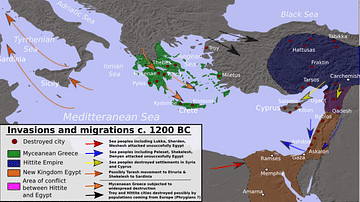
Image
Bronze Age Mediterranean Invasions & Migrations
A map of the Late Bronze Age Mediterranean indicating the various invasions and migrations of the period.
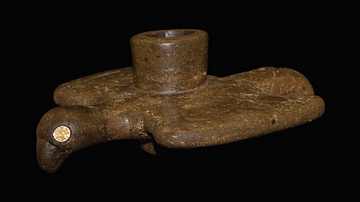
Image
“Flying Eagle” Great Pipe
“Flying Eagle” Great Pipe. Made from solid stone with inlaid abalone shell for
eyes. From the Middle Woodland Hopewell time period, dating in the 200 BCE - 200 CE range. Found in Ross County, Ohio.
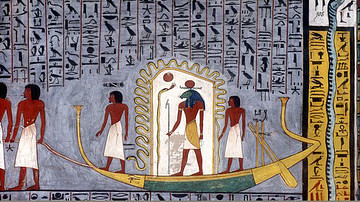
Image
Ra Travelling Through the Underworld
Ra travelling through the underworld in his barque, from the copy of the Book of Gates in the tomb of Ramses I, Egypt, c. 1290 BCE.

Image
Edwin Smith Papyrus
The Edwin Smith Papyrus is the world's oldest surviving surgical document written in hieratic script in ancient Egypt around 1600 BCE. Plate 6 and 7 of the papyrus, pictured here, discuss facial trauma.
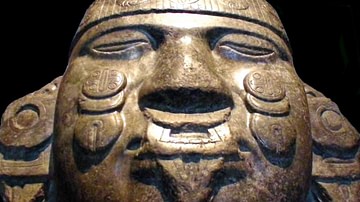
Image
Coyolxauhqui Head
Head of the Aztec Moon goddess Coyolxauhqui. From Tenochtitlan, carved during the reign of Ahuitzotl, 1486-1502 CE. Green diorite. (Museum of Anthropology, Mexico City)
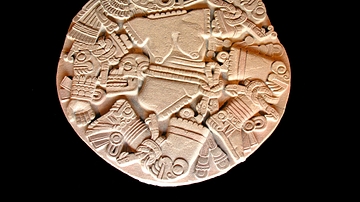
Image
Coyolxauhqui
The 3.2m diameter stone disk which depicts the decapitated and dismembered corpse of Coyolxauhqui. According to Aztec mythology the war god Huitzilopochtli chopped up the goddess when she tried to lead a rebellion against the gods. Her head...
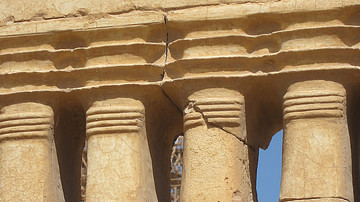
Image
Djed Pillars
Djed pillars (representing stability) in Temple T of the Saqqara complex, Egypt.

Image
Temple at the Step Pyramid, Saqqara
This temple at the Saqqara complex may have been built for embalming Djoser's body but was regularly used afterwards – at least during the Third Dynasty of Egypt – most probably as an offering site (there is a platform out front which seems...
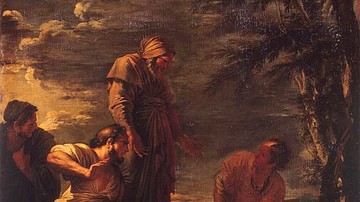
Image
Democritus & Protagoras
A painting by Salvator Rosa (c. 1663 CE) depicting the two Greek philosophers Protagoras (right) and Democritus (centre). (Hermitage Museum, St. Petersburg)